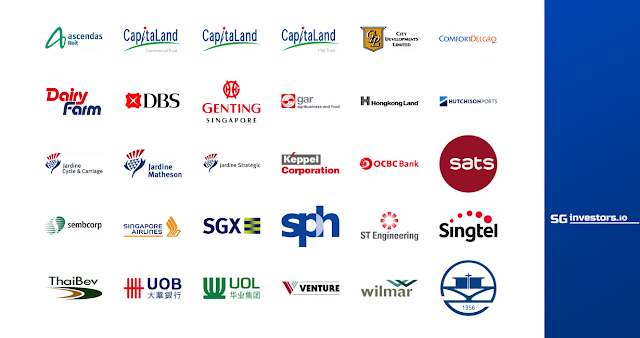What is your “ Share Turnover “ ratio ?
 |
| image credit to sbr.com.sg |
What is 'Share
Turnover' From Investopedia.com
BREAKING DOWN 'Share Turnover'
A high turnover ratio is good at the market level as it means the overall trading volume and liquidity are high and good for traders/ fund managers who can trade easily in that particular market.
Stocks
traded, turnover ratio of domestic shares (%) For US / JPN/ HKG and SIN Market
( here
)
Base on above, STI has a quite low turnover ratio of around
31% as compared to an advance market like the US (95% ), Japan ( 105%) or even the
market closer to us, HKG (41%). This also partly explained why STI was not
performing well in 2017 as lack of interest from global fund managers or
traders.
Whereas
at an individual or mutual fund level, a high turnover ratio means higher cost especially
the “active manage “ fund or unit trust. We also know that more and more
investors are moving towards passive fund like ETF due to cost factor.
I
have written about the cost impact of buying unit trust / mutual fund which
affecting the overall ROI in the long run ( here
).
Quote “High turnover rates apply to actively managed funds,
while passive portfolios such as an index fund have very low turnover ratios.
To calculate the turnover ratio for a given fund, the total amount of assets
purchased or sold during the year must be obtained. If a fund holds $100
million in AUM and $75 million of those assets are liquidated at some point
during the measurement period, then assets sold/AUM = turnover rate, or 75%.
It
is important to note a fund turning over at 100% annually has not necessarily
liquidated all positions with which it began the year; rather, the complete
turnover accounts for frequent trading in and out of issues and the fact sales
of securities equal total AUM for the year. Using the same formula, the
turnover rate is also measured by the number of securities bought in the
measurement period.” Unquote.
What are your stocks traded turnover
ratio?
I try to work out my stocks traded turnover ratio by adding
my, buy & sell value divided by total equity asset value for 2017 vs 2016.
My turnover ratio in 2017 was around 54% vs 2016 ( 95% ) ,
there was a huge reduction in the ratio
which simply mean that I traded less in 2017 and paying lesser fees to my
broker. Assuming the cost of 0.3% on brokerage and clearing fees, the total cost incurred for 2017 amounting to
around $4.6K as compared to 2016 of $6.7K.
Always remember that the more you trade, the more you are
paying to your broker. It reminds me
of this book I read before:
Where Are The
Customer’s Yachts
A great summary from a renowned financial blogger about the
book: Ben Carlson ( A Wealth of Common Sense )
10 Great Lines From ‘Where Are the
Customers’ Yachts?’ (here
)
How
Mutual Fund Trading Costs Hurt Your Bottom Line from Money.USnews.com
I am not sure what will be the optimum level for such
transaction ratio for retail investors like us, but for sure the cost shall increase in-tandem
with the ratio. Should I be more passive and trade less in 2018 to reduce the
ratio and paying lesser brokerages fees subsequently? What do you think? or Have you ever calculate your share traded turnover ratio?
Cheers !!
PS:
Total Expenses Ratio for typical Mutual Fund or Unit Trust
is about 1.5- 2 % over AUM, which include “ management fees, administrative
fees, operating cost, marketing and advertisement etc….whereas my brokerage
fees incurred in 2017 was just about 0.16% of my portfolio value. Obviously,
it is other expenses like Management Fees / Admin & Operating cost that
kill the performance of the active managed mutual fund in the long run …
Quote Of The Day :
“Trading is inevitably a zero-sum game before
costs, and a ‘loser’s game’ after deducting the high costs of all those
transactions. In economic terms, trading is a ‘rent-seeking’ function which
subtracts value from Wall Street’s customers,” John
Bogle






I am thinking using the ratio of share value transacted / Portfolio start value.
ReplyDeleteHi Cory,
DeleteYah ,, that could be another way of tracking your trading and cost ..
Cheers !!